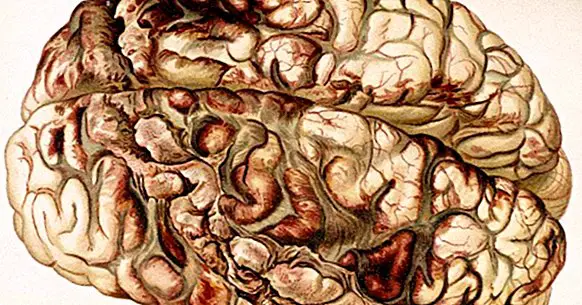Neurological disorders in information processing
Historically, the first students of neuropsychology argued that cognitive functions are dissociated (that is, they could be selectively altered due to brain damage) and that each of them is constituted by different elements that, in turn, also dissociate.
The previous hypothesis, called "the modularity of the mind" , supports the idea that the neurological system of information processing is formed by an interconnection of several subsystems, each of which includes a number of processing units or modules responsible for supporting the main system.
On the other hand, the fact of that any brain damage can alter selectively one of these components also seems to be directed towards another modular organization of the structure and physiological processes of the brain.
- Related article: "Parts of the human brain (and functions)"
Objective of neuroscience in neuropsychological intervention
Thus, the primary goal of neuroscience in this question is to know to what extent the biological functions of the brain "break" in such a way that this division corresponds directly to the decomposition of the processing units that (according to the main postulates) of neuropsychology) underlie the realization of a given cognitive function.
In an attempt to achieve the above goal, neuropsychology has tried to advance by leaps and bounds in the knowledge of the structure and functioning of the information processing system through the study and Detailed functional analysis of the behavior of patients with various types of brain damage .
Alterations and neurological disorders
It must be borne in mind that, as a main consequence of a brain injury, a pattern of altered behaviors and preserved behaviors can be clearly observed in the patient. Interestingly, the altered behaviors, in addition to being dissociated from the rest of the individual behaviors, can be (in many cases) associated with each other.
If an analysis of the behavioral dissociations derived from brain damage is made, on the one hand, and an analysis of the associations, on the other (the latter will lead to determine if all the associated symptoms can be explained by virtue of the damage in a single component) , the components of each modular subsystem could be identified , within the global and / or main system, thus facilitating the study of the operation of each one of them.
Behavioral dissociations
In the 1980s, some authors identified three different types of behavioral dissociations: classical dissociation, strong dissociation and the tendency to dissociation .
When a classic dissociation occurs, the individual does not show any deterioration in the accomplishment of diverse tasks, but executes others of a quite deficient form (in comparison with his executive abilities before the cerebral injury).
On the other hand, we speak of strong dissociation when the two tasks compared (performed by the patient for evaluation) are deteriorated, but the deterioration observed in one is much higher than that observed in the other , and also you can quantify the results (measurable and observable) of the two tasks and express the difference between them. In contrast to the previously presented, we speak of "dissociation tendency" (it is not possible to observe a significant difference between the executive level of both tasks besides not being able to quantify the results obtained in each of them and explain their differences).
We know that the concept of "strong dissociation" is closely related to two independent factors: the difference (quantifiable) between the levels of execution in each of the two tasks, and the magnitude of the executive deterioration presented. The greater the first and the lower the second, the stronger the dissociation presented.
Symptomatological complexes
Traditionally within our field of study has been called "syndrome" a set of symptoms (in this case behavioral) that tend to occur together in an individual under various conditions.
Classify patients into "syndromes" has a series of advantages for the clinical psychologist . One of them is that, since a syndrome corresponds to a specific location of the lesion produced, this can be determined by observing the execution of the patient in the tasks for its consequent assignment to a specific syndrome.
Another advantage for the therapist is that what we call "syndrome" has a clinical entity, so, once it is described, it is considered that the behavior of every patient who has been assigned to it is being described.
It is necessary to emphasize that, in fact, rarely a patient under treatment fits perfectly in the description of a specific syndrome; In addition, patients assigned to the same syndrome do not usually resemble each other.
The reason for the above is that, in the concept of "syndrome" that we know, there is no restriction on the causes why the symptoms that comprise it tend to occur together, and these reasons can be of at least three types:
1. Modularity
There is a single component and / or biological module altered and all the symptoms presented in the patient's behavior are derived directly from this alteration .
2. Proximity
Two or more significantly altered components are present (each of which causes a series of symptoms), but the anatomical structures that keep them functioning and / or support They are very close to each other , so lesions tend to produce symptoms to all together and not to a single one.
3. Chain effect
The direct modification of a neurological element or module resulting from an encephalic lesion, in addition to directly causing a series of symptoms (known as "primary symptoms"), alters the executive function of another element and / or neurological structure whose anatomical support is originally intact, which causes secondary symptoms even without having been the main target of the injury produced.



















